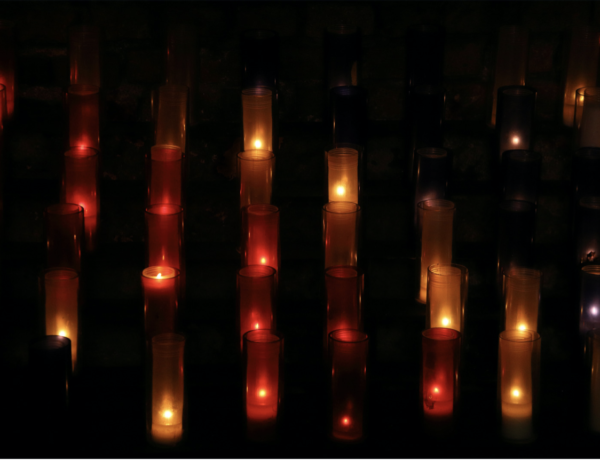The Federal Bureau of Prisons (BOP) has chosen to respond to the COVID-19 pandemic not with humane caution, but with punitive cruelty. Though the agency has been urged since the passing of the First Step Act on December of 2018 to release sick and elderly inmates, many of whom have completed at least half of their sentences, it has released perhaps 231 of the nearly 170,000 inmates presently incarcerated in the system in the past two years, 89 since the onslaught of the coronavirus epidemic, most of them already slated for release to halfway houses.
Though Compassionate Release came into legislative existence as far back as in the Second Chance Act passed in 2007, when federal inmate populations soared at 220,000, the BOP has consistently disregarded direction from Congress and from its own chain of command at the Department of Justice to use the option to release the old, weak, infirm and dying. Instead, it has perpetuated lengthy incarceration, now holding desperately on to an aging and sick population easily numbering over 20,000 inmates, all highly vulnerable and at risk for death from COVID-19.
The courts, needless to say, have not stepped in to remedy this situation but have been silent partners in the process of warehousing prisoners while continuing to churn out irrationally stacked sentences that guarantee de facto life behind bars.
While it purports to offer adequate medical care at its facilities, a cursory glance at the staggering number of legal lawsuits for medical malpractice leveled at the BOP in recent years points to a harsher truth. As funding for the agency has been cut back, the quality of medical and dental care, as well as programs for education and rehabilitation, have been the first elements on the chopping block. On many compounds, professional medical personnel is absent on weekends. ‘Try not to get sick on a Sunday’, is the federal inmates’ mantra. Many compounds, especially those that the government has turned over to public sector corporate management, have begun to resemble low-level, crude backwater county prisons and not the smooth-operating correctional complexes once heralded as Club-Fed in the previous century.
Now, under the pressure of the global pandemic, the cracks in the overcrowded, understaffed
system have begun to show. In responding to the threat of viral infection, the BOP has chosen not to turn to compassionate release, not to take the recommendations of experts in epidemiology working for the CDC, but to regress to that most favorite of all old-time prison crisis management responses: lockdown and communication blackouts. Instead of testing inmates at its facilities in the first weeks of the national shut-downs, the BOP placed inmates in close quarters, disregarded the use of PPE masks for inmates and guards, and negligently handled infected inmates using guards to work alternating shifts in both infected and non-infected compounds. Throughout the system, guards and inmates fell prey to the swift contagion. At compounds like Oakdale, Elkton, Fort Dix, Forrest City, Terminal Island, Lompoc,
Fort Worth, and others, the situation quickly became chaotic. In mid-March, the agency finally began to impose mandatory use of masks and to institute quarantined areas in its prisons, but it was too little, too late. And now the system, eager to respond to what appears to be a national mood to return to ‘normalcy’, to relax restrictions and open things back up, continues to limp along, with over 3,000 inmates infected and at least 48 dead (though the agency’s reporting has been spotty and unreliable, often obtained only after pressure from local area health department officials). For a few days, a direct email line was opened for inmates to access the Inspector General anonymously, but it was quickly shutdown, no doubt due to the flood of problems and complaints. A snail-mail address has been provided instead.
The virus does not relax or ease up. Several BOP compounds have been spared sickness and death but only by the coincidence of numbers and infection density in certain areas. There’s nothing that guarantees an all-clear at this point, whether in prisons or out in the rest of the world, as demonstrated by the recent infections in the White House. There is no real safety anywhere. The virus is merciless, constant and unpredictable, and no amount of positive thinking, good vibes or whatnot will make it disappear. We can’t knock the heels of our magic Wizard of Oz shoes together and make it all go away. What this ever-mutating pandemic has revealed is that through the actions of our prisons and legal systems we have opted for punishment over mercy, sadistic bureaucracy over compassion. It is the same attitude that ushered us into mass incarceration in the first place, the old 1970’s ‘Dirty Harry’ good-cop-who-has-no-use-for-Constitutional-rights attitude. We’ve chosen to place the definition for ‘criminal’ righteously ahead of the definition for ‘human being’, and to incarcerate thousands of non-violent persons for felonies once considered misdemeanors without hope of rehabilitation or release, even unto death.
And yet, the astounding hypocrisy of our system is impressive, impossible to ignore. Big pharma and alcoholic beverage companies operate and thrive with impunity while street drug dealers kill each other over turf or get locked up for decades. Fourteen or fifteen-year old girls model lingerie and cosmetics for high fashion magazines, while similar imagery can send child porn offenders to federal prison and even into civil commitment. Political hacks and Trump cronies like Paul Manafort are released from confinement without hesitation, while inmates dying from terminal conditions, old men withering in wheel chairs, and pregnant women, are allowed to suffer and die behind bars.
At Otisville Prison, low-security inmates serving their sentences in camp settings were herded into maximum-security cells for 23-hour lockdown for their ‘safety’. At Lompoc and Terminal Island, access to phones and computers was terminated after COVID-19 began to run rampant through the prison. Inmates were cut off completely from their loved ones and from the outside world. Since March 13th, all visitations in all BOP institutions have been suspended and yet, even now, the transfer of prisoners from compound to compound continues on a weekly basis, the daily obsessive body counts and shakedowns, the forced wearing of prison uniforms, the constant demeaning, dehumanizing rituals of prison.






No Comments